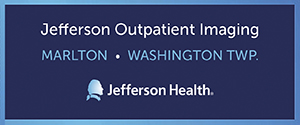
A new series of telehealth apps are helping change the medical industry.
Catherine Cipolla recently had a minor skin irritation that she knew required treatment, but the busy psychotherapist couldn’t carve out enough time in her work schedule to see a doctor. That’s until she recalled a postcard that she had received from her health insurance provider, Horizon Blue Cross Blue Shield of New Jersey, describing a telehealth app now covered by her plan.
So during a break between patients, Cipolla sat at her computer, visited the Amwell web page, chose a physician based on credentials and communicated face-to-face over video chat. “The doctor’s face popped up right away,” Cipolla says. “I’m not at all a techie, yet I found it very self-explanatory and easy to use.” While the doctor was very knowledgeable and provided the correct diagnosis, the call left Cipolla disappointed.
She says she made the call intending to get a prescription, but Amwell didn’t provide one, offering up only home remedies and leaving her to travel to the nearest Minute Clinic in Cherry Hill.
Like Cipolla, more and more patients are turning to telehealth apps like Amwell that provide virtual doctors’ visits and fast answers. The telehealth industry is rapidly growing, with an estimated 7 million patients in the U.S. expected to use these apps by 2018, according to a study by global information company IHS.
Horizon Blue Cross Blue Shield of New Jersey, the state’s largest insurer, recently teamed up with telehealth company American Well to offer the Amwell mobile app to customers. Meanwhile, Comcast is now offering their employees the Doctor on Demand service, fully subsidized under some plans. However, these apps—while certainly convenient—are a work in progress. Amwell, for example, which exceeded 1 million downloads in 2014 and operates in 46 states, doesn’t provide prescriptions to patients in some states, like New Jersey, in order to adhere to state medical board recommendations. Other apps, like Doctor on Demand and HealthTab, will serve up prescriptions to New Jersey patients as long as the physician that communicated over video chat deems it necessary.
Of course, any telehealth company you ask will say this is no substitution for visiting your primary care physician, but is viewed as a supplement for those times you just can’t get in the door—say, after hours when all doctors’ offices and urgent care centers are closed, or when your schedule simply won’t allow it. “It’s always recommended that you see your primary care physician if you can or follow up with him or her if the problem persists,” says Catherine Anderson, a spokesperson for American Well, adding that the common cold, flu and rashes are usually some of the conditions that users turn to Amwell to help relieve. Meanwhile, companies that are jumping on board see it as a value-add for those they serve. “It is new but it is being used, and we’re really pleased with the convenience it can provide to our customers,” says Thomas Vincz, a spokesperson for Horizon Blue Cross Blue Shield of New Jersey.
While these apps don’t look to compete with your primary physicians, local doctors are taking notice and see even bigger possibilities on the horizon.
“I think telemedicine is the future of medicine,” says Dr. Anthony Wehbe, physician and medical director for Kennedy Health Alliance. “It will catch up with society, just like now it is normal for me to pick up my phone and FaceTime. In a few years, I think telemedicine will be the norm. You can attach a stethoscope or an otoscope to a computer, and doctors can check out patients who are on an offshore rig or doing research in Antarctica. The technology is there now, and I think that’s where the future is headed.”
When it comes to the regulatory framework for the use of these apps in New Jersey, industry players believe more clarity could emerge in the near future. So far, the New Jersey medical board has issued a policy that all physicians practicing telehealth must hold a New Jersey license. Last spring, the Federation of State Medical Boards released Model Telehealth Policy that states telehealth is one modality for delivering quality care if there’s audio-video—not just audio over the telephone— and the patient can choose a physician based on their credentials, rather than being randomly assigned. In addition, the Medical Society of New Jersey supports telehealth and has backed a bill that would provide for Medicaid reimbursement for telehealth consultations, as well as another bill that would require private insurers to reimburse for consultations. Both bills would require that the consultations offer both audio and video links, rather than audio-only phone calls. This spring, State Licensure Compact and Centers for Medicare & Medicaid Services were to vote on Medicaid reimbursement for telehealth.
Though telehealth is very much a work in progress, it will continue to build and gain momentum, Wehbe says.
“In the medical field, we’re always very risk averse. We want to be as safe as possible. That’s the culture of medicine. Then there are state medical board rules. When it comes to prescribing medication through telehealth, the New Jersey medical board says you need an established doctor-patient relationship to prescribe medication. That’s the gray area there in terms of what the board allows. Some people do not consider Skype to be intimate. I, personally, think meeting someone virtually is the same as meeting them in person. In my opinion, views on telehealth will change as society changes,” Wehbe says.
In the meantime, many telehealth companies are rolling out special services, ranging from virtual visits with doctors and pediatricians to nutritionists and lactation consultants. Some companies are also positioning themselves as health-related resources for their patients, from providing a platform where data from patients’ calls can be passed on to their primary care physician for seamless care to a resource in which doctors rate medications for patients to make informed decisions about drugs’ effectiveness and potential side effects.
While all these apps offer their own set of unique offerings to patients, they all keep one thing in mind: getting—and keeping—you healthy. And we can’t argue with that.
House Call
Here’s a glimpse at how some of the major telehealth players are helping to shape this medical industry niche.
Amwell
This app by Boston-based American Well was dubbed the “most popular telehealth app of 2014” by app analytics and app market data researcher App Annie. The Amwell app, available for free, along with its website, gives users live video access to U.S. board-certified doctors and boasts a wait time of less than two minutes on average, with a maximum out-of-pocket cost of $49 to see a virtual doctor.
In addition to doctors, Amwell provides services from therapists and nutritionists. Patients can select which doctor they would like to see based on their credentials. The app also provides a complete record of a patient’s visit afterwards.
Amwell’s parent company, American Well, has also integrated with Apple’s HealthKit to provide health data from Apple’s new Health app with a doctor during a video visit. This is paving the way for users of wearable technology to immediately share day-to-day metrics such as heart rate, blood pressure, blood glucose levels and weight to doctors during their virtual visits.
“For the first time, we can make a connection between consumer health data on your iPhone and a doctor that visits your home over video,” says Dr. Roy Schoenberg, CEO of American Well. “This opens a world of opportunity, with increased access to care for people everywhere and better care of patients with chronic conditions.”
Doctor on Demand
San Francisco-based Doctor on Demand, co-founded by Dr. Phil McGraw, host of the Dr. Phil Show, and with an impressive roster of investors that include Richard Branson, Athenahealth CEO Jonathan Bush and Google Ventures, offers video chats by U.S. board-certified doctors, as well as virtual visits with psychologists, pediatricians and lactation consultants.
A virtual visit with a doctor costs $40. Psychologist visits costs $50 for 25 minutes or $95 for 50 minutes, and lactation consultant visits cost $40 for 25 minutes or $70 for 50 minutes. If necessary, doctors will email a prescription to your local pharmacy.
"Doctor On Demand is an extremely effective way to see a physician from the comfort of home. Seventeen of the top 20 conditions people go to urgent care or the ER for can be treated by Doctor On Demand physicians," says Dr. Pat Basu, chief medical officer for Doctor On Demand.
HealthTap
Palo Alto, Calif.-based HealthTap offers several levels of service: visitor, member, prime subscriber and concierge, based on patients’ needs. Visitors have access to browse through millions of questions patients have asked and doctors have answered, whereas patients at the concierge level can get personalized prescriptions, referrals and checklists between virtual visits, along with medication reminders.
HealthTap enables “people to manage their health and well being, and get immediate access to the world’s best doctors and their knowledge anytime anywhere from any mobile device, personal computer, or wearable,” says HealthTap CEO Ron Gutman.
This app has also just launched HealthTap RateRx, a full-scale resource created by doctors that compares and contrasts drug treatment options for a broad range of ailments, illnesses and medical conditions.
Published (and copyrighted) in South Jersey Magazine, Volume 12, Issue 3 (June, 2015).
For more info on South Jersey Magazine, click here.
To subscribe to South Jersey Magazine, click here.
To advertise in South Jersey Magazine, click here.












